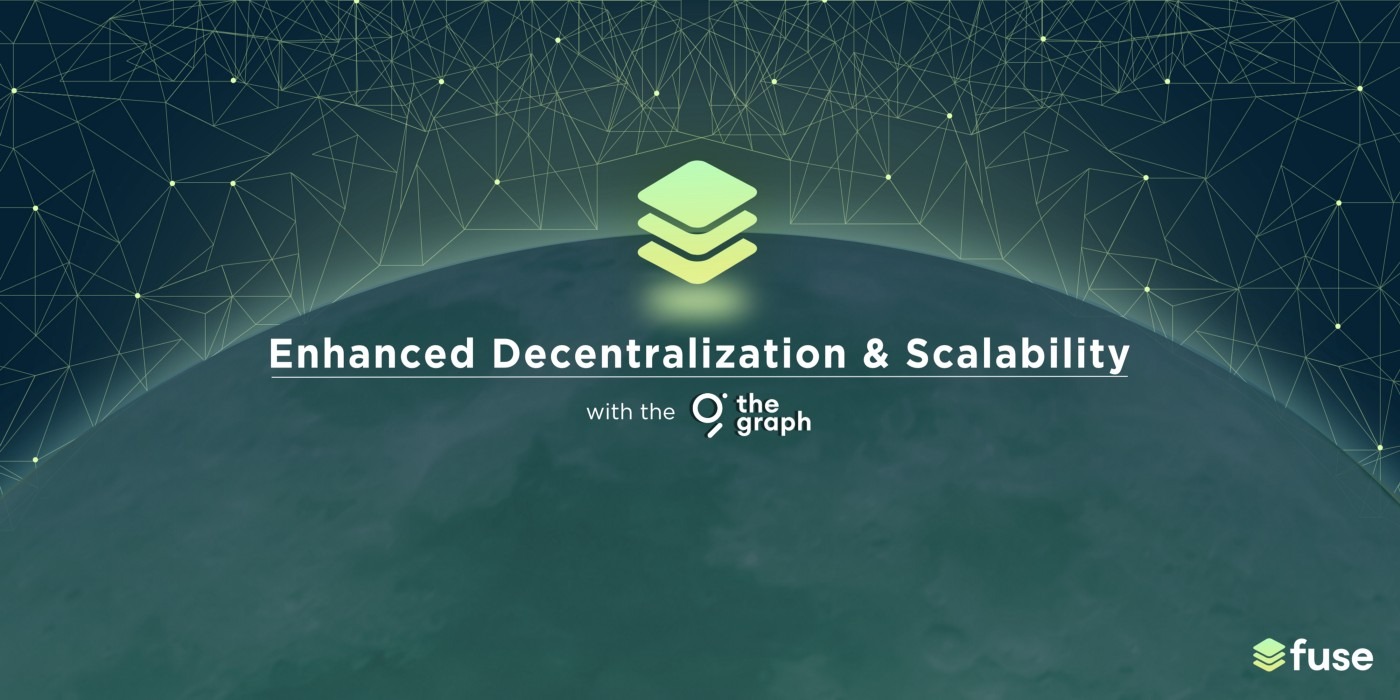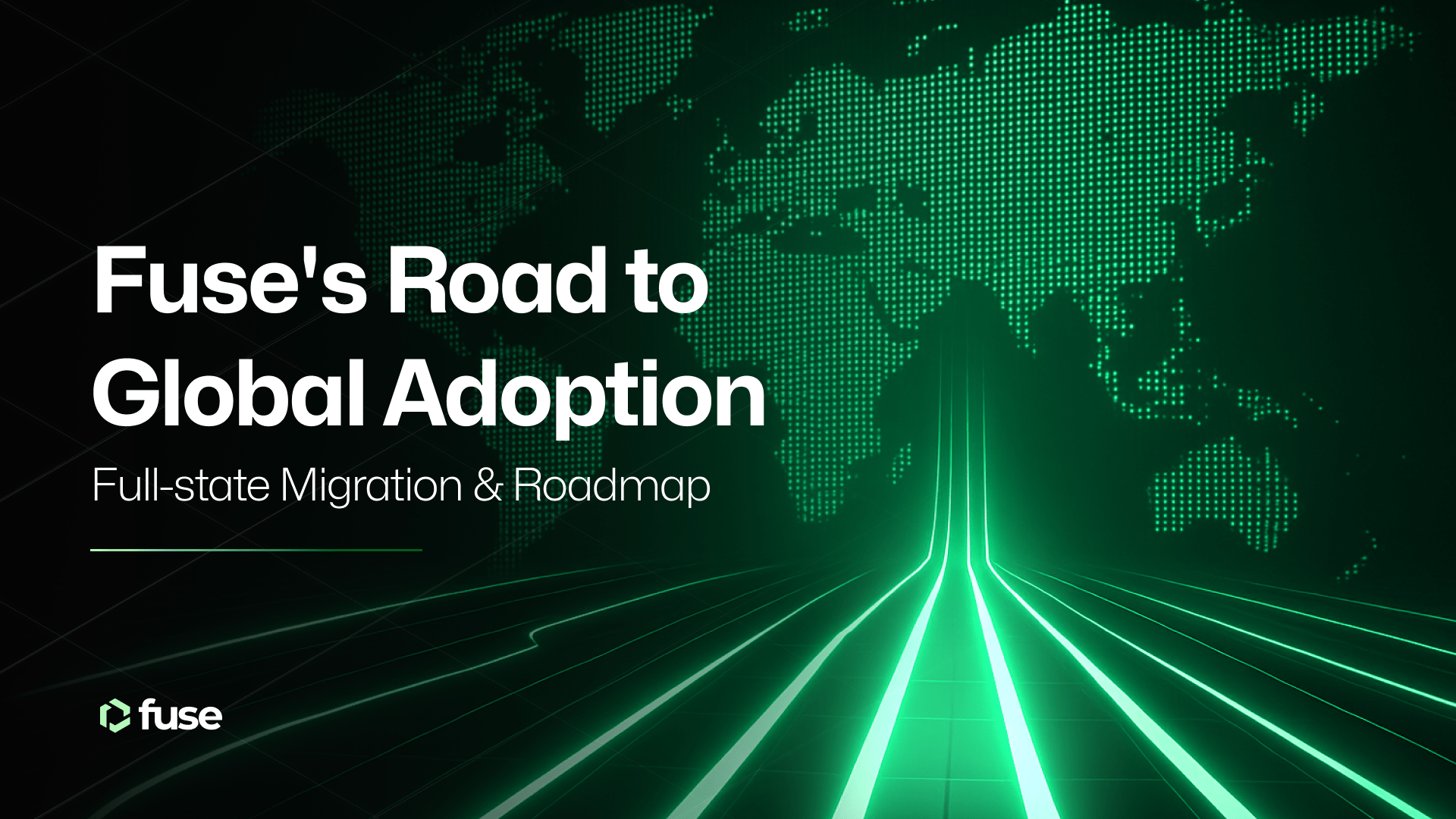In March, on this blog, we announced the important integration with The Graph, a decentralized protocol for querying and indexing blockchain and Web3 data. We are excited to announce that the integration went live on The Graph’s hosted service this week, and we would like to explain to our community how The Graph will be extremely helpful for Fuse in achieving higher scalability and security.
How The Graph works
The Graph is a decentralized network of nodes that are rewarded for indexing Web3 data from blockchain protocols, and open protocols such as IPFS. Anyone can run a node by staking GRT in the network, and returning queries for indexing subgraphs.
A Graph Node can be provided with instructions to index a subgraph. A subgraph outlines a blockchain network with a specific set of smart contracts where all of its data should be read and indexed in the Graph node, so that the Graph Node can provide this data to be queried through a decentralized query marketplace. The instructions to index a specific subgraph are stored on the decentralized storage protocol IPFS — thus allowing anyone to start a Graph Node and index a Subgraph as long as they have the Subgraph ID — which will point to the files’ locations on IPFS. Once the subgraph has been published on the network, anyone can now search, or “query,” the data it contains using the GraphQL query language.
Currently, The Graph has 172 nodes supporting the network, and the examples of node operators include prominent staking providers stakefish and Chorus One.
What The Graph does for Fuse
The fact that our integration with The Graph went live means that Fuse is now one of the networks fully supported by The Graph’s hosted service and will be supported on the decentralized network. This implies that anyone can now create a subgraph on it that references one or more smart contracts on Fuse, and users and applications can easily access the subgraph’s data. Subgraphs are a core lego building block for more and more innovation to occur on Fuse for the broader Web3 ecosystem.
In our own products, we also use subgraphs on The Graph extensively. In fact, even before the integration, we had already been using subgraphs but their data was stored on our server and it was our graph-node that was indexing the smart contract data and adding them to the subgraphs. Now, the instructions for the subgraphs in question are stored on IPFS and the subgraphs are queryable via The Graph that is listening to the relevant smart contracts. Hence, the Fuse platform is on its way to becoming even more decentralized and scalable than before.
To help you better understand the benefits with a couple of concrete examples, consider the subgraphs for Fuse’s native DEX FuseSwap and The Studio tool that enables everyone to create and manage payment-centric communities. These subgraphs contain structured information from smart contracts that those products rely on.
For instance, the FuseSwap subgraph tracks, among other things, the amounts of individual trades that its users make on various trading pairs. This then allows the FuseSwap Analytics web-page to correctly display the trading volumes for the particular trading pairs and the DEX as a whole. For our payment communities, the subgraph for The Studio, enables us to conveniently fetch information about their users and participating businesses.
Other applications building on top of Fuse can now easily query blockchain data and use these subgraphs or build their own to meet their unique purposes and attain the same decentralization and scalability benefits that the core Fuse platform already enjoys.
About The Graph
The Graph is the indexing and query layer of the decentralized web. Developers build and publish open APIs, called subgraphs, that applications can query using GraphQL. The Graph currently supports indexing data from Ethereum, IPFS, and PoA with more networks coming soon. To date, over 10,000 subgraphs have been deployed by ~16,000 active developers for applications, such as Uniswap, Synthetix, Aragon, Gnosis, Balancer, Livepeer, DAOstack, AAVE, Decentraland, and many others.
If you are a developer building an application or Web3 application, you can use subgraphs for indexing and querying data from blockchains. The Graph allows applications to efficiently and performantly present data in a UI and allows other developers to use your subgraph too! You can deploy a subgraph or query existing subgraphs that are in the Graph Explorer. You are welcome to join The Graph Network as an Indexer, Curator and/or Delegator. Join The Graph community by introducing yourself in The Graph Discord for technical discussions, join The Graph’s Telegram chat, or follow The Graph on Twitter! The Graph’s developers and members of the community are always eager to chat with you, and The Graph ecosystem has a growing community of developers who support each other.
The Graph Foundation oversees The Graph Network. The Graph Foundation is overseen by the Technical Council. Edge & Node is one of the many organizations within The Graph ecosystem.
There were more than 2K Curators from over 90 different countries and over 170 Indexers from more than 50 countries in The Graph’s testnet. The Graph community is globally distributed, with over 4,500 GRT holders from more than 99 different countries world-wide. Delegation can happen by anyone who holds GRT. Today, there are over 5k Delegators and over 200 Indexers on The Graph Network.
Follow our social media channels to stay updated on recent news and developments at
.svg)
.svg)











